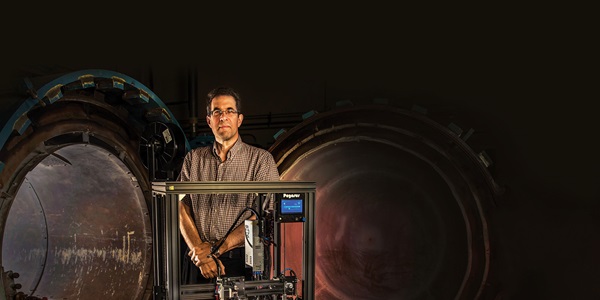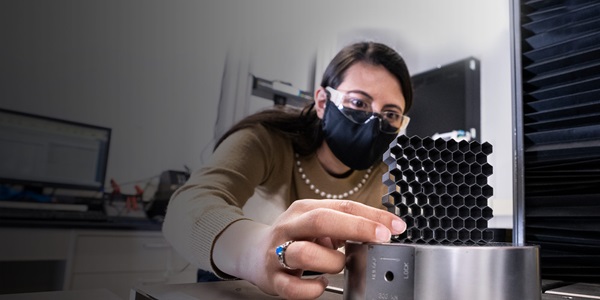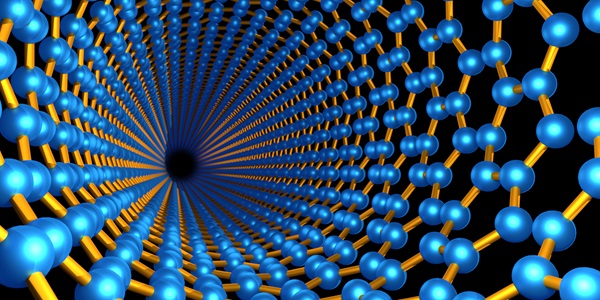Engineers could use carbon fiber reinforced 3D printing to quickly build low-cost, lightweight, composite parts using an automated, digitally-run machine.
The Additive Advantage

By Kelly McSweeney
Additive manufacturing, commonly called 3D printing, is no longer an emerging manufacturing technology. It has recently become more accessible for consumers, and it's not uncommon to find a 3D printer in schools or homes. However, this type of on-demand manufacturing has been evolving in the aerospace industry for decades — and Northrop Grumman has been leading the charge.

Leveraging Different Materials for 3D Printing
The 3D printers most people know involve plastic. The printer heats plastic until it is soft enough to mold into the desired shape. Then hardens when cooled down. Advanced manufacturing, however, involves materials that have been designed to meet specific objectives. For example, in some situations, you may need a durable material, while in others, you may prioritize flexibility. In aerospace, engineers evaluate materials based on many factors, such as the ability to handle extreme temperatures and electrostatic discharge.
"We are now using five different additive manufacturing materials in our products – more when considering tooling," says Barnes. He adds that they are investigating additional materials that can't yet be announced.
Engineers have a variety of options depending on their program's requirements. "The choice of material depends on the requirements and the cost benefit," Barnes says. He explains that polymers are a cost-effective option for many applications, but in scenarios such as supersonic aircraft that get hotter than 300 degrees Fahrenheit, a metal such as Titanium is often the right choice.

The Advanced Manufacturing Methods for 3D Printing
Some industrial applications use the type of additive manufacturing you see available to consumers, in which a nozzle "prints" the object. This is called fused filament fabrication.
"We are using some of that, except the materials, the controls and the equipment are much more sophisticated and expensive than what you would use at home," Barnes explains.
Other advanced methods are available, including a process called "powder bed fusion" in which powder is heated and sintered, often by a laser. Northrop Grumman does a specialized type of powder bed fusion in which the power source is an electron beam that produces parts even faster than a laser.

Pioneering Additive Manufacturing
Northrop Grumman's Advanced Manufacturing Technology & Innovation group is working on research and development for new capabilities, such as additional materials that have never been used for 3D printing before.
"We're a technology-driven organization that tries to develop new methods and processes for implementation on our air vehicles," Barnes says.
This is history in the making — literally. In fact, the first 3D-printed titanium airplane part to ever fly off an aircraft carrier, that Northrop Grumman built and flew in 2011, will soon be on display in a new additive manufacturing section of the Patuxent River Naval Air Museum to preserve the history of Naval Aviation.
More Innovation Stories
Read all stories about advanced technology and innovation >>


